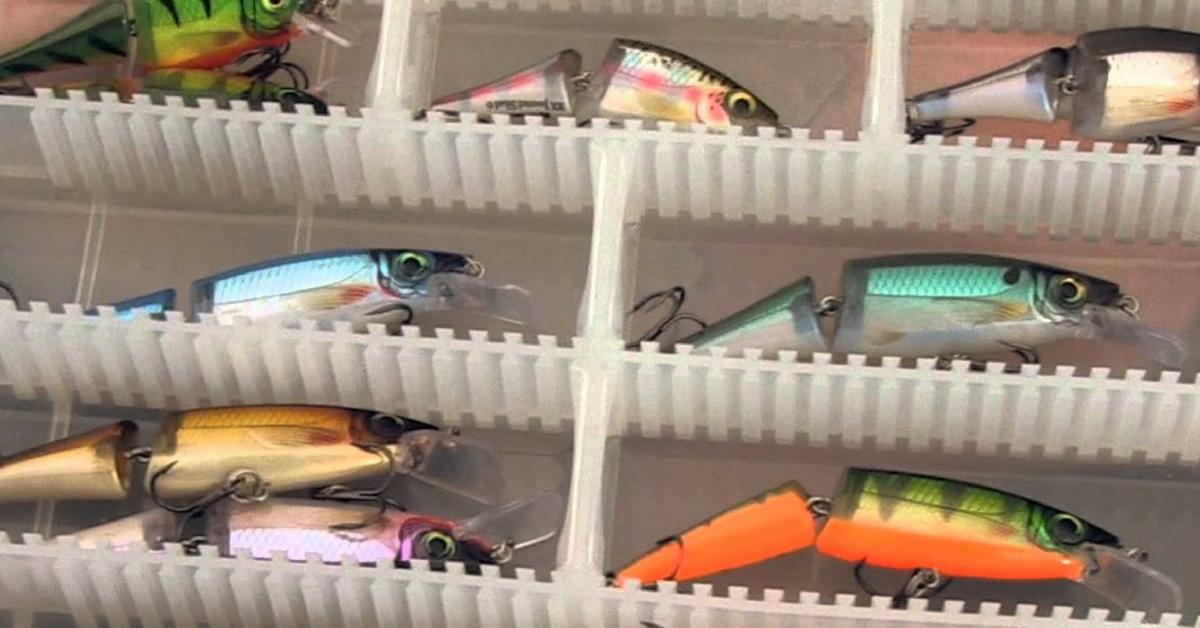Jointed Stickbaits: Why You Should Use Them To Target Big Bass
What's the deal with jointed stickbaits? Some lures attract more fishermen than they do fish and eventually become novelty items for lure collectors. Others catch boat loads of bass, but mass production and excessive use makes these lures less effective when bass become conditioned to them. Then there’s the lures designed for other species, which innovative anglers have converted into their secret baits for bass.One such lure that falls into the third category is the jointed stickbait. For years anglers at Table Rock and Bull Shoals lakes remained tight-lipped about how they caught postspawn bass. Topwater lures such as Rebel Pop-Rs and Zara Spooks caught a fair amount of bass during that time, but only some of the local anglers knew the virtues of throwing a jointed stickbait for postspawn bass until the tactic was exposed in magazine articles.
Jointed Stickbaits History
The pioneers of this technique originally threw the Cotton Cordell Jointed Red Fin, a stickbait used primarily by saltwater anglers along the Gulf Coast for redfish and speckled trout. The Red Fin is still a popular choice for postspawn bass but other lure options are now available.The Table Rock guides set up their clients with jointed stickbaits because they considered the lures to be the easiest topwater bait to work. The jointed body generates plenty of action even when retrieved slowly making it ideal for novice anglers to use. Most jointed stickbaits are equipped with split rings that allow you to tie your line directly to the lure without having to use a loop knot for increased action.Despite being larger than a lot of topwater lures, the jointed stickbait plays more of a finesse role as a surface bait. A chugger or Zara Spook is designed to make a splash whereas the front of the jointed stickbait will make a small wake and the tail will just wobble behind it.
Conditions & Retrieves For Jointed Stickbaits
The best time to use a jointed stickbait on the surface is after bass leave the nests and migrate to main lake points where the fish school up and chase shad.Just like other topwater lures, jointed stickbaits work best in overcast weather. The lure is also productive during the low light of morning. The lure also works better than a walking topwater bait if it’s windy. Jointed stickbaits trick some bass in stained water, but it produces best in clear water.A slow, steady retrieve works best for this broken-back plug. Keep the lure on the surface all the time by reeling just fast enough to where the lure won’t submerge. Holding your rod tip high during the retrieve helps keep the nose of the lure up so it waddles along the surface. Most of the time you can just reel in a straight and steady fashion, but once in a while try some little twitches if you are not getting enough action out of the lure. If the wind picks up where there is a little chop on the surface try a steady shake of the rod tip to create more action.The mood and depth of the fish will also dictate how to retrieve the jointed stickbait. Sometimes you might have to retrieve the lure at a medium pace to make the stickbait wiggle and swim 2 to 5 inches below the surface.
Jointed Stickbait Tips
Shad patterns and subtle colors work best for working jointed stickbaits on the surface. Try combinations of black back with pearl gray sides or blue or black back with chrome or white sides in most situations. If the sun is causing too much glare on the chrome lure, switch to a bait with bone-colored sides. If bass ignore these colors, try translucent shades rather than solid colors.Strikes on the jointed lure vary from subtle swirls just under the surface to hard smashes on top. One of the big thrills about this lure, especially in clear water, is you can see the fish come up and nail it. Most of the time the strikes are subtle with bass coming up from behind the lure and just sucking it down.
Recommended Gear For Jointed Stickbaits
A 7-foot medium action casting rod with a soft tip is a necessity for making long casts with a jointed stickbait. In addition to improving casting distance, the soft tip also prevents you from pulling the lure away from the fish during the strike. A lower gear ratio reel (5.2:1 or 5.1:1) is best for this technique because it helps you retrieve the lure at a slow pace.When fishing open water along a bluff or point, you can use line as light as 12-pound test. For most situations you can work a jointed stickbait on 14- to 15-pound test but if you are retrieving the lure over standing timber treetops or through heavy cover, you should upgrade to line as heavy as 20-pound test.
Updated May 9th, 2018 at 3:19 PM CT


